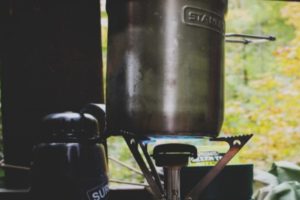
If there is one thing that you must remember to take everytime you're out hiking, it must be a walkie-talkie. It vital that you have this one bit of equipment, but you'd be amazed how many people have any form of radio communication even in the middle of some of the most difficult hikes across the UK.
It's early June and we have spent the last weekend hiking across the Brecon Beacons which for late-April was a lot of fun. One problem, there was an emergency with a walker falling badly. They had no radio and whilst they did have some survival gear, it was a good few hours before the emergency services were called.
The problem, they were out for a day-hike and had taken a mobile phone, but the with the weather being good for the Brecon Beacon, it was still pretty terrible. As a result, their mobile phone did not work. Generally mobile phones are perfect in major cities but outside towns and cities, mobile phones are generally unreliable. While out hiking in the middle of nowhere you will probably receive a weak signal at best and that is when the weather is good.
Walkie talkies on the other hand will, as long as you keep them charged, work anywhere.
Things To Consider When Buying A Walkie-Talkie
There are many different types of walkie talkies available on the market and you should carefully consider the exact kind you will need.
- Battery length? – Some walkie talkies take disposal batteries in which case you should consider taking a couple of packs with you. Others have rechargeable batteries like phones and though you can charge them for 8 hours or more you will need something to charge them again.
- How many walkie talkies will you need? – Walkie talkies generally come in pairs, but you can find sets of 5 – 6 walkie talkies. If you are going as a big group, it should be cheaper to buy one of the bigger sets than 3 or 4 pairs.
- The radius of transmission – You should always consider the radius of the walkie talkie. The better ones have a radius of up to 36 miles while the lesser ones have a radius as short as a couple of miles.
- Noise reduction – On walkie talkies you can often hear a lot of static and noise from other users. Don't despair. You can buy walkie talkies with built in noise reducers.
- The size of the radio – Walkie talkies used to be the size of a brick, but nowadays they can fit in the palm of your hand. If you want to go even smaller, you can buy a walkie talkie watch.
- What type of weather do you need it for? – Some walkie talkies are water proof. Others are dust proof. Some can even float on water.
How To Use A Walkie-Talkie
- Put the walkie talkies on the same channel. You should find the channel selector at the top of the radio. All you have to do is turn it to the least distorted one. The better the radio, the more channels you should have. Some channels are used specifically used by certain people such as the police or truckers, but others are open to everyone.
2. Turn the walkie talkie to the required volume. Usually the walkie talkie will have a volume button next to the channel selector. On most walkie talkies nowadays you will be able to plug in a set of ear or headphones, which are particularly useful of course if you need to keep the noise to a minimum.
3. On the side on the walkie talkie you should find a push to talk button. You have to press this button to transmit what you want to say. To listen to their reply, you just release it.
4. Know how to speak on a radio. Between you and your friends you may only have to say over, meaning you have finished what you are saying and the next person can speak. When you have finished your conversation you can say over and out. But what if you are lost and you need to communicate with someone you don't know? The following are some of the terms you can use;
- 10-20 What's your location?
- 10- 1 The person is struggling to hear you.
- 10-27 They want to move to a different channel
- Copy – Do you understand
- Affirmative/Negative – Yes/no







